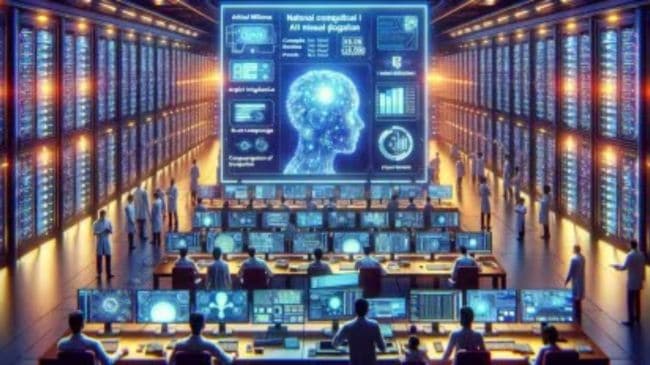In the fast-evolving landscape of machine learning, Convolutional Neural Networks (CNNs) have emerged as a powerhouse, particularly in the realm of computer vision. These networks excel at capturing intricate correlations between pixels in images, making them a go-to choice for tasks like image classification. However, a significant limitation arises when dealing with massive data or high-dimensional models, where CNNs tend to struggle with inefficiency.
But fear not, as the innovative work of Seunghyeok Oh and his team has opened the doors to a groundbreaking solution. They’ve seamlessly blended quantum computation with CNNs to craft an immensely efficient and high-performing technique. This fusion of technologies has birthed what we now know as Quantum Convolutional Neural Networks (QCNN). In this comprehensive article, we’ll delve deep into the world of QCNN, exploring its paradigms and applications that promise to reshape the future of machine learning.
The Power of CNNs: A Brief Overview
Before we immerse ourselves in the quantum realm, let’s understand why CNNs are such a force to be reckoned with in the first place. In the realm of computer vision, where real-world images often exhibit strong pixel correlations, CNNs thrive. Unlike fully connected models, CNNs are adept at preserving these correlations, resulting in more accurate performance assessments.
The core of CNNs lies in the combination of convolution and pooling layers. Convolution layers unearth hidden data by linearly combining neighboring pixels, while pooling layers reduce feature map sizes, curbing the risk of overfitting and conserving computational resources. After successive applications of these layers, classification is performed through fully connected layers, often fine-tuned with gradient descent optimization.
Now, let’s journey into the realm of quantum computing and its marriage with CNNs.
Deciphering Quantum Computing
Quantum computing is a burgeoning field offering a novel approach to solving problems that confound traditional computers. In quantum computing, the game-changers are superposition and entanglement, phenomena absent in classical computing environments. These characteristics empower quantum computers to perform parallel operations using quantum bits or qubits, revolutionizing problem-solving capabilities.
Quantum computing holds great promise for tackling algorithmic challenges previously deemed insurmountable. In the realm of machine learning, quantum computing models are gaining traction. Additionally, the optimization of quantum devices using gradient descent methods has paved the way for rapid quantum machine learning.
The Paradigm of QuantumCNN
Quantum Convolutional Neural Networks, or QCNNs, extend the fundamental features of CNNs into the quantum realm. When traditional computing grapples with exponential data growth concerning quantum systems defined within the many-body Hilbert space, QCNNs offer a lifeline. Thanks to the representation of quantum data using qubits, the application of a CNN structure to quantum computers sidesteps this computational hurdle.
Now, let’s dissect the architecture of the QCNN model.
The QCNN Architecture Unveiled
The QCNN model mirrors the familiar CNN structure by incorporating convolution and pooling layers into the quantum domain. Here’s how it works:
- Hidden State Discovery: Multiple qubit gates between adjacent qubits within the convolution circuit unveil the hidden state.
- Pooling Circuit: The pooling circuit reduces the quantum system’s size by observing qubit fractions or applying CNOT gates to pairs of qubits.
- Re-creating Circuits: The convolution and pooling circuits are recreated based on the insights gained in steps 1 and 2.
- Classification: If the quantum system’s size is manageable, a fully connected circuit predicts the classification result.
To achieve this structure efficiently, QCNN often employs the Multiscale Entanglement Renormalization Ansatz (MERA), a model for simulating many-body state quantum systems. MERA introduces qubits into the quantum system, exponentially increasing its size with each depth. QCNN, however, employs a reversed MERA to reduce the quantum system’s size significantly.
Applications of QCNN
One of the most compelling applications of QCNN lies in image classification, an area where CNNs have shone brightly. Thanks to superposition and parallel computation, quantum computers offer a unique advantage. Quantum Convolutional Neural Networks enhance CNN performance by integrating quantum environments. Here’s a closer look at how QCNN can revolutionize image classification:
The Quantum Convolution Layer: In a quantum system, the quantum convolution layer mimics the behavior of its classical counterpart. It applies a filter to the input feature map, but with the added power of quantum computing, unlocking superposition and parallel computation capabilities. While quantum computers are still limited in size, they can effectively apply the quantum convolution layer by processing the image map in smaller segments.
The Quantum Convolution Process: This process unfolds in several steps:
- Encoding: The filter size’s pixel data is stored in qubits, translating classical information into quantum form.
- Hidden State Detection: Learnable quantum circuits’ filters detect hidden states from the input state.
- Decoding: Quantum states are measured to derive new classical data.
- Iterational Steps: To complete the feature map, the above steps are repeated.
The specific choice of gates used to craft the random quantum circuit can significantly impact learning performance. By introducing variable gates, the circuit can adapt and optimize using gradient descent methods.
Final Thoughts on QCNN
In this enlightening exploration, we’ve witnessed how QCNNs seamlessly integrate the power of CNN models with the quantum computing realm. These fully parameterized quantum convolutional neural networks hold immense promise for quantum machine learning and data science applications. For those keen on practical implementations, delve into the TensorFlow implementation and the research team’s work highlighted in the introduction.









Leave a Reply